Understanding Mobile Teeth Whitening Consent Forms
In the evolving landscape of dental care, mobile teeth whitening has emerged as a convenient and accessible option. This service brings professional teeth whitening directly to the client, offering a comfortable experience. However, like any medical procedure, it’s crucial to ensure that patients fully understand the process and potential outcomes before undergoing treatment. This understanding is formalized through a mobile teeth whitening consent form, which is a legally binding document that protects both the client and the service provider. This guide provides a comprehensive overview of what a consent form entails, why it’s essential, and how to create a compliant and effective form for your mobile teeth whitening business. A well-crafted consent form not only protects you legally, but also builds trust and transparency with your clients, fostering a positive experience.
What is a Mobile Teeth Whitening Consent Form
A mobile teeth whitening consent form is a written agreement between the client and the mobile teeth whitening provider. It serves as evidence that the client has been informed about the procedure, including the benefits, risks, and alternatives. The form typically includes details about the treatment process, the materials used, and any potential side effects. It also outlines the client’s responsibilities, such as following pre- and post-treatment instructions. By signing the form, the client confirms their understanding and voluntary agreement to undergo the teeth whitening treatment. This informed consent is a cornerstone of ethical and legal practice, ensuring that clients make decisions based on complete and accurate information. This process builds a foundation of trust and mutual respect between the provider and client.
Why are Consent Forms Necessary
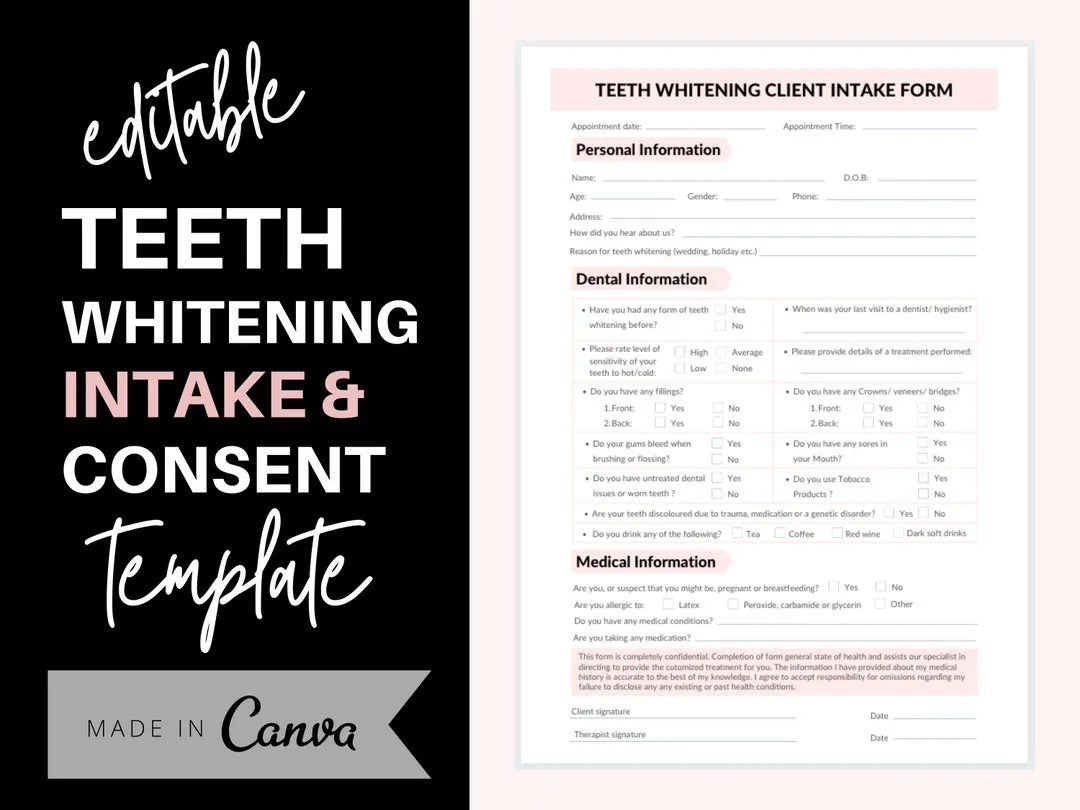
Consent forms are a legal and ethical requirement in healthcare. They protect both the provider and the client. For the provider, the form provides a defense against potential legal claims by demonstrating that the client was fully informed and consented to the procedure. For the client, it ensures they have the right to know what to expect, including any potential risks or complications. Without a signed consent form, a provider could be liable for negligence or battery. Furthermore, consent forms promote transparency and build trust. They encourage open communication between the provider and the client, leading to a more satisfying and less stressful experience. Ensuring that the client understands the process helps in setting realistic expectations and avoiding misunderstandings. Moreover, in the context of mobile services, it’s vital to clearly define the terms and conditions of the service, including any specific requirements or limitations.
Key Elements of a Mobile Teeth Whitening Consent Form
Patient Information
The consent form must begin with accurate patient information. This includes the client’s full name, date of birth, address, and contact details. Including the client’s dental history or any relevant medical information ensures that the provider has a complete picture of the client’s health. Any allergies or sensitivities must be clearly documented. This section should also include space for the client’s signature and the date of signing. Furthermore, it’s important to include the name and contact information of the mobile teeth whitening provider, as well as the location where the service will be performed. Ensuring all details are correct builds a complete and legally sound record.
Procedure Details
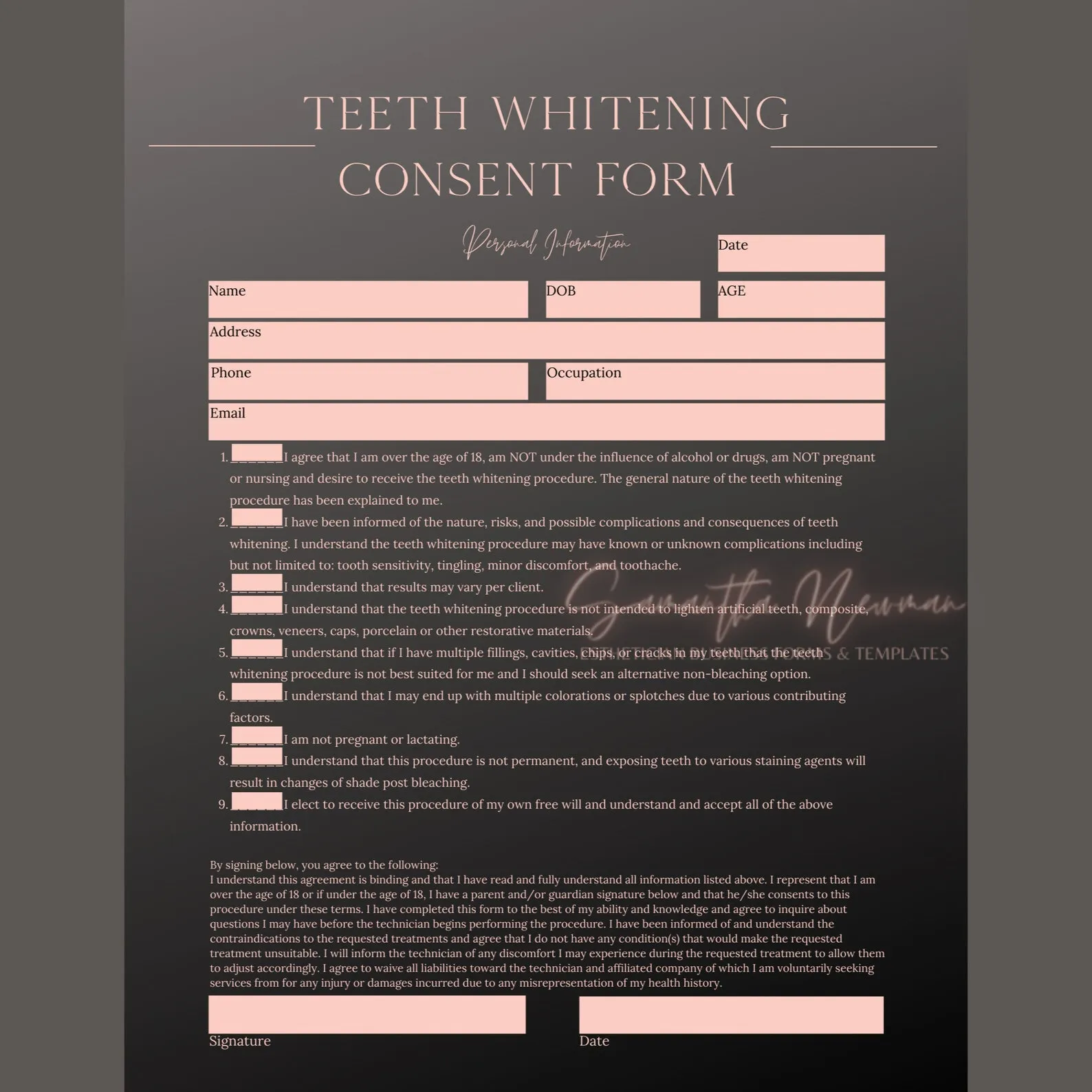
This section provides a detailed explanation of the mobile teeth whitening procedure. It should outline the process step-by-step, including the use of whitening agents, the duration of the treatment, and any special equipment or techniques used. Specifics should include the type of whitening product used, the concentration of hydrogen peroxide or other active ingredients, and the expected results. The form should also mention the number of sessions, and any follow-up care that may be required. The information should be presented in clear, easy-to-understand language, avoiding technical jargon. It helps set realistic expectations regarding the potential results of the treatment. Provide any pre-treatment and post-treatment instructions, and make sure to allow space for additional notes related to the procedure or any special considerations for the patient.
Risks and Side Effects
Transparency about potential risks and side effects is crucial. The consent form must clearly list the possible adverse effects of the teeth whitening treatment. These may include temporary tooth sensitivity, gum irritation, or other discomforts. It should detail how long these effects are expected to last and any measures the client can take to alleviate them. Include information on less common but serious risks, like changes to tooth enamel or allergic reactions. The provider needs to emphasize that while rare, these reactions can occur, and how to contact them or seek medical attention if necessary. Provide contact information for emergencies. This section should use plain language to ensure the client fully understands potential adverse reactions. This shows the provider’s commitment to client safety and informed decision-making.
Benefits of Mobile Teeth Whitening
In addition to addressing the risks, the consent form should highlight the benefits of mobile teeth whitening. This includes the expected improvement in the appearance of the teeth, the enhancement of the client’s smile, and increased confidence. Mention the convenience of the mobile service and how it fits into the client’s lifestyle. Explain the effectiveness of the whitening process and the anticipated duration of the results. This allows the client to make an informed decision, weighing the benefits against the potential risks. A clear explanation helps the client understand the value of the service and sets realistic expectations for the outcome. This builds trust and allows clients to move forward with confidence.
Pre- and Post-Treatment Instructions
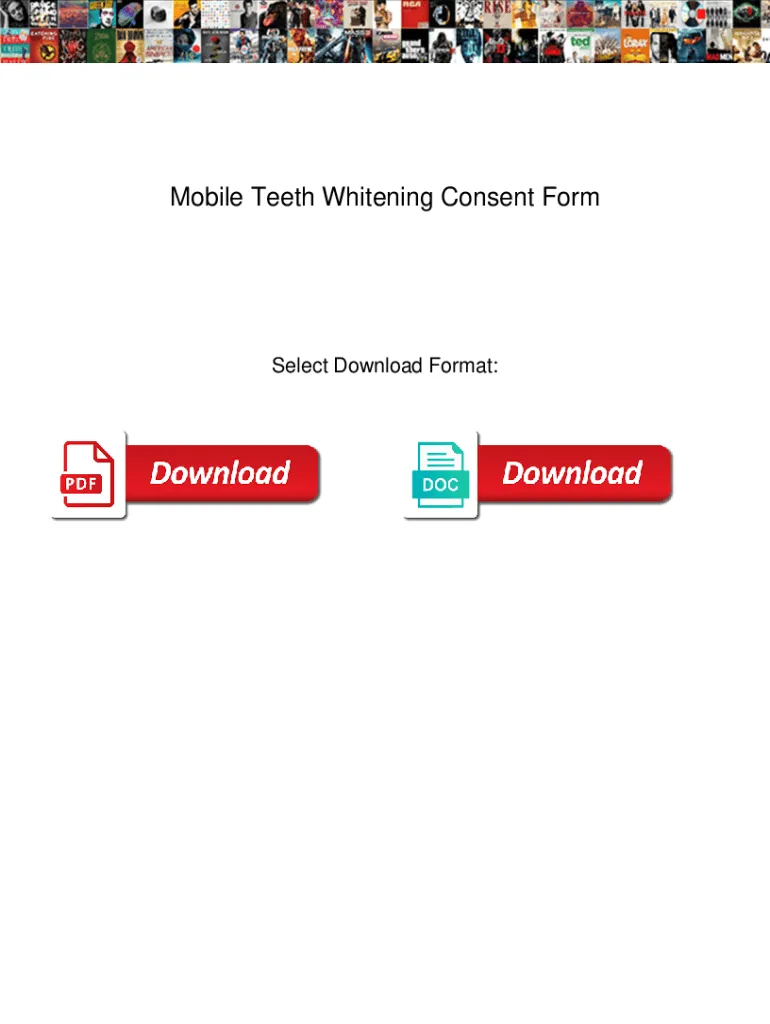
Clear pre- and post-treatment instructions are vital to a successful outcome. The consent form needs to detail any preparations the client should take before the whitening session. This includes any dietary restrictions, avoidance of specific substances like smoking, or oral hygiene recommendations. Post-treatment instructions are equally critical. These should outline how to care for the teeth after the procedure, including avoiding staining foods and drinks. The client needs to know what to expect in the days following the treatment, such as increased tooth sensitivity, and any steps they can take to alleviate any discomfort. Provide a list of products that are recommended or to be avoided. Instructions should be easy to follow. Make sure to provide your contact information, in case they need to reach you after the treatment.
Consent and Signature
The final section of the consent form must contain a clear statement of consent. This is where the client acknowledges that they have read, understood, and agree to the terms of the treatment. The consent statement must be explicit, indicating that the client is willingly undergoing the procedure. Include a space for the client to sign and date the form. It is also recommended to include a space for the provider to sign and date the form. The form should also state that the client has been given the opportunity to ask questions and receive answers. This section is crucial, as it serves as the primary evidence of the client’s informed consent. Make sure to keep a copy of the signed form for your records.
Creating Your Mobile Teeth Whitening Consent Form
Essential Sections to Include
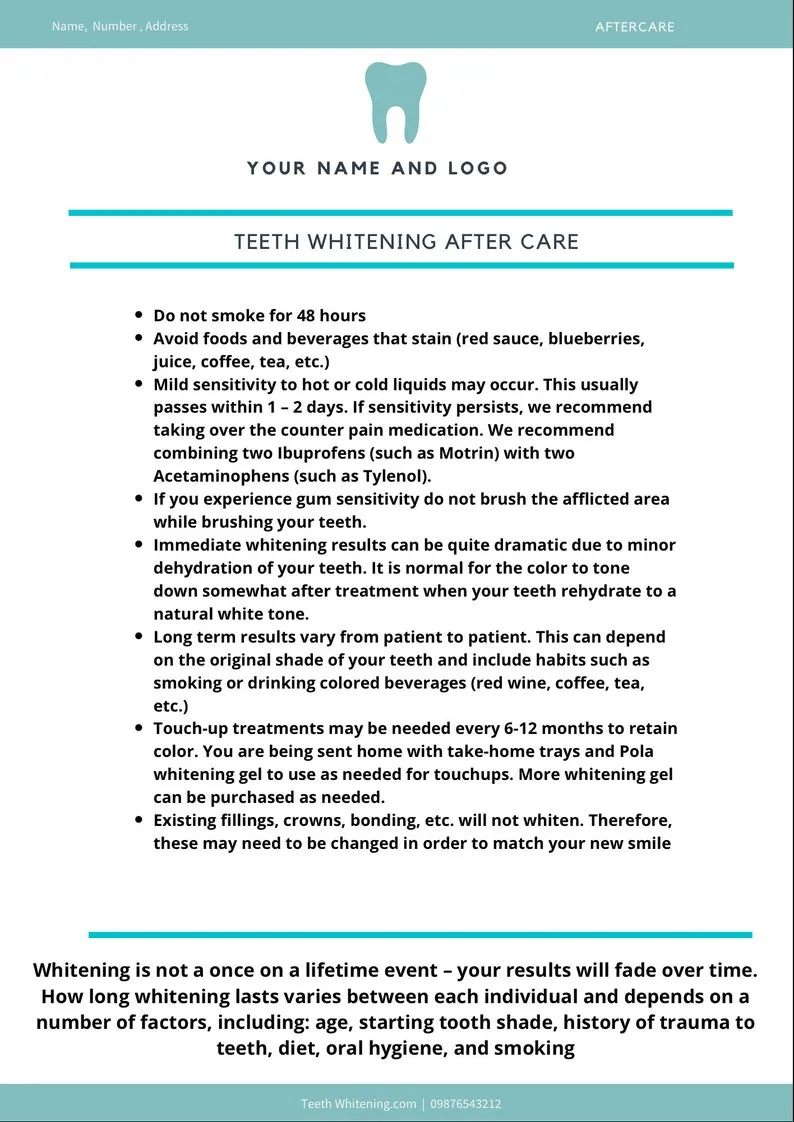
When creating your consent form, ensure you incorporate all the key elements mentioned previously. Start with the patient information and include detailed procedure information. Make sure to list all the potential risks and side effects. Clearly outline the benefits of the treatment and provide easy-to-understand pre- and post-treatment instructions. The consent and signature section is essential and must be included. Use clear and concise language, avoiding jargon whenever possible. Consider using bullet points or numbered lists to make the information easier to read. Review the form carefully to ensure it is accurate, complete, and legally sound. Make sure it covers every aspect of the service you provide. Your consent form needs to be as clear as possible.
Legal Considerations
It is essential to comply with all relevant legal regulations and standards. Consult with a legal professional specializing in healthcare to ensure your consent form meets all requirements. This is especially important in mobile services, as regulations can vary. Ensure the form complies with privacy laws, such as GDPR or HIPAA, depending on your location and how you handle patient data. Include a data privacy statement explaining how you will protect the client’s personal information. If you offer services to minors, include specific consent provisions for legal guardians. It’s wise to update your consent form regularly to remain compliant with changing regulations.
Tips for Clarity and Accuracy
Use plain language. Avoid medical jargon and technical terms that clients may not understand. Write in a straightforward and easy-to-read style. Use clear headings and subheadings to organize the information. Break up large blocks of text with bullet points, numbered lists, and short paragraphs. Ensure the form is visually appealing and easy to navigate. Proofread the form carefully for any grammatical errors or typos. Have a colleague or legal professional review the form. This helps make sure the language is accurate and the information is complete. Keep the form concise and focused, providing only the necessary information. Include contact information for questions and concerns.
Best Practices for Obtaining Consent
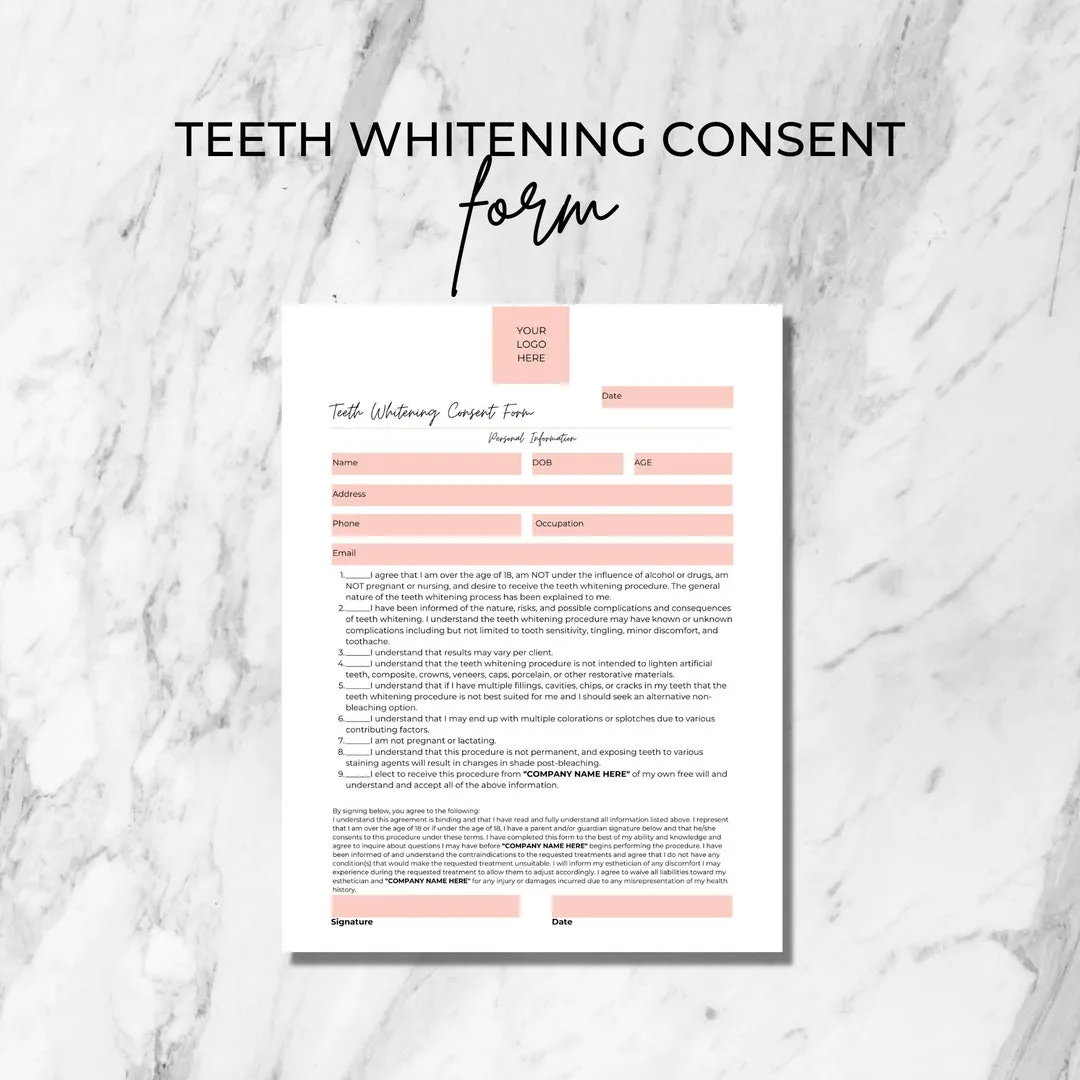
Explaining the Procedure Clearly
Before obtaining consent, clearly explain the teeth whitening procedure to the client. Describe the process step-by-step, using visuals if possible. Discuss the type of whitening agents, the duration of the treatment, and the expected results. Explain any potential sensations the client may experience during the procedure. Ensure the client understands the purpose of each step of the treatment. Provide ample opportunity for the client to ask questions and clarify any uncertainties. Use patient-friendly language and avoid technical terms. Make sure the client feels comfortable and informed before proceeding.
Addressing Patient Concerns
Take the time to address all of the client’s concerns and questions. Listen attentively to their concerns about the treatment and potential risks. Provide honest and transparent answers, using language they can easily understand. If the client has any hesitations or anxieties, address these directly. Provide reassurance and explain how you will minimize potential discomfort. Provide support to those who are hesitant. Make sure you are building a strong and trusting relationship. Creating a safe and supportive environment promotes a positive experience.
Ensuring Voluntary Consent
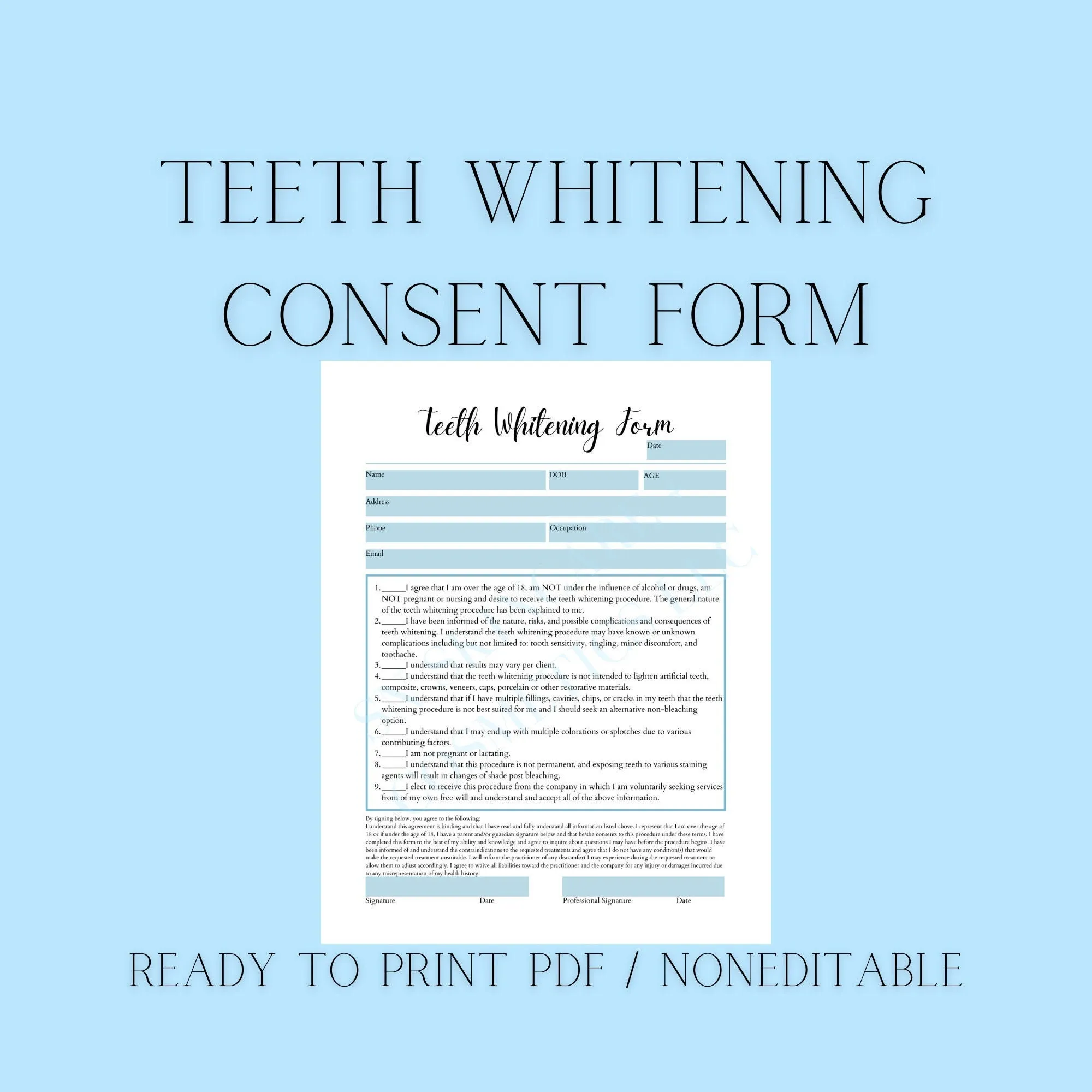
Consent must be given voluntarily, without coercion or pressure. Make sure the client feels comfortable making their own decision, without feeling pressured. Avoid using high-pressure sales tactics or implying that they must have the procedure. Give them ample time to review the consent form. Ensure the client understands that they can withdraw consent at any time, before or during the procedure. Make sure they are aware that they can decline the treatment without any negative consequences. Creating a relaxed and open environment is crucial. Be respectful and attentive to their wishes.
Examples of Consent Form Clauses
Patient Acknowledgement of Risks
Include a clause where the client acknowledges their understanding of the risks associated with the treatment. This could state: “I acknowledge that I have been informed about the potential risks and side effects of the teeth whitening procedure, including temporary tooth sensitivity and gum irritation.” This section should also address the fact that not all patients will receive the same results. It is also important to indicate that the client is aware of less common but serious risks, such as allergic reactions or damage to the enamel. This clause needs to be specific, detailing all potential outcomes of the procedure. This protects the provider and creates a fully informed patient.
Agreement to Treatment
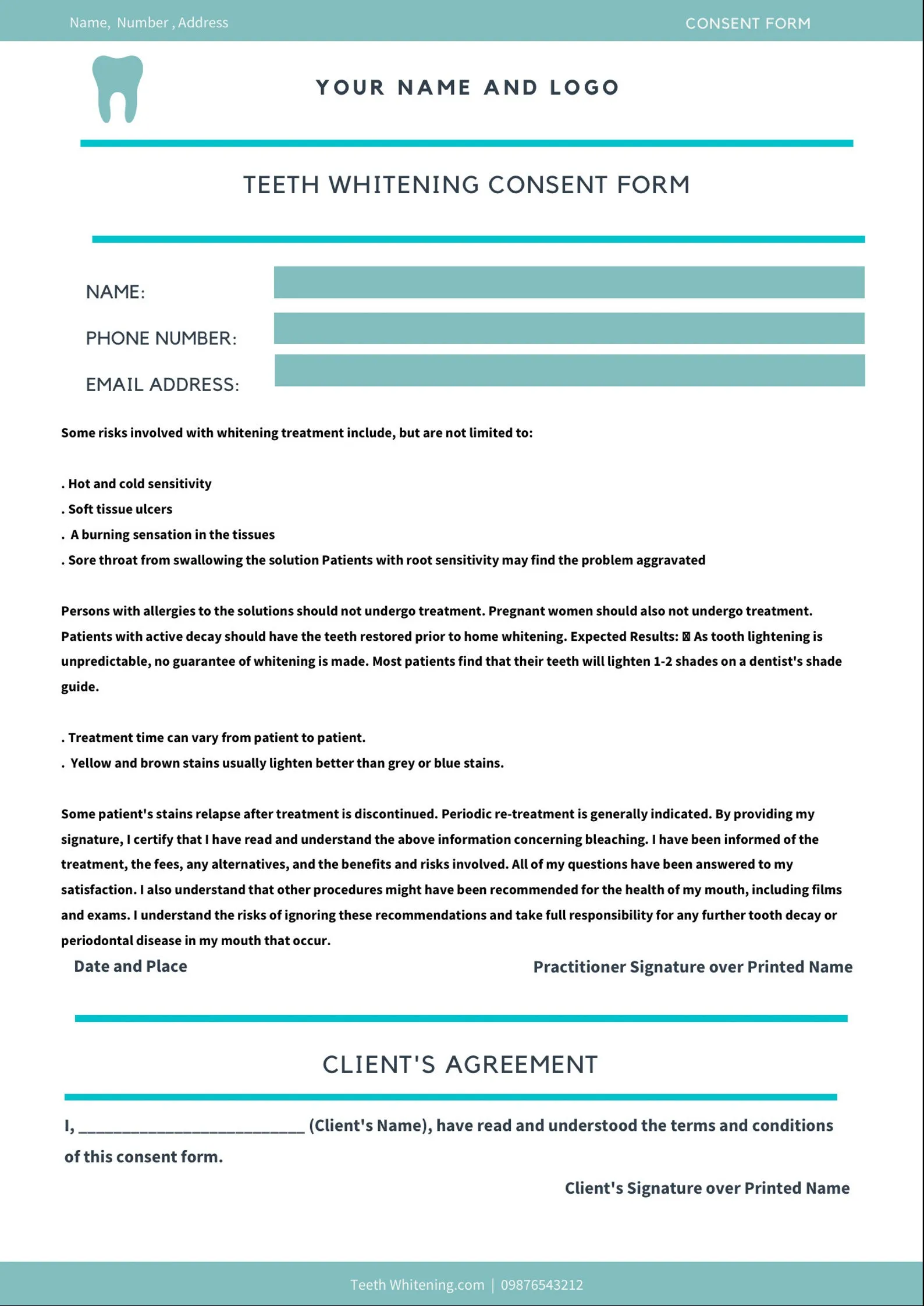
A crucial clause confirms the client’s agreement to undergo the procedure. This might read: “I voluntarily consent to undergo the mobile teeth whitening procedure described to me, and I understand the benefits and risks involved.” This clause must include the client’s understanding of pre and post-treatment instructions. It’s important to define any limitations. This clause confirms that the client is making an informed decision. It affirms that the client has no questions about the treatment. The signed consent indicates the client’s commitment to follow all recommendations. This is a core element of the consent form.
Data Privacy and Confidentiality
Include a data privacy and confidentiality clause to reassure the client that their personal information will be protected. This could state: “I understand that my personal information and medical records will be kept confidential and used only for the purpose of providing teeth whitening services. My information will be protected in accordance with privacy laws.” Clearly explain how client data will be stored, and under what circumstances it might be shared. Include information about client rights regarding their data, such as access and deletion. Make sure to mention how long you will retain the client’s records. This strengthens trust, demonstrating the provider’s commitment to client privacy.
Frequently Asked Questions about Consent Forms
What if a Patient is a Minor
If the client is a minor, you’ll need to obtain consent from their legal guardian. The consent form should include a section for the guardian to provide their information. The guardian needs to understand the risks and benefits of the treatment on behalf of the minor. Make sure to include the legal guardian’s signature. Consult with a legal professional for specific guidance on consent requirements. Ensure the guardian understands the treatment and gives consent voluntarily. This is to protect the minor and comply with legal standards.
Do I need a Witness
In some situations, it is advisable to have a witness present when the client signs the consent form, particularly for high-risk procedures. The witness needs to verify the client’s signature. It can be a colleague or someone who is impartial. The witness should also confirm the client understands what they are consenting to. Although not always required, having a witness can strengthen the legal validity of the consent form. Check local regulations or consult with a legal professional to determine if a witness is required.
Can the Consent Form Be Modified
The consent form can be modified, but any changes should be documented clearly. Minor changes may be made with the client’s initialed approval. If major changes are needed, a new consent form may need to be signed. Always date and initial any modifications to the form. Regularly review and update the form to ensure it remains accurate and compliant with all regulations. Consult with a legal professional when significant changes are required. Always prioritize accuracy and clarity in the consent form.
